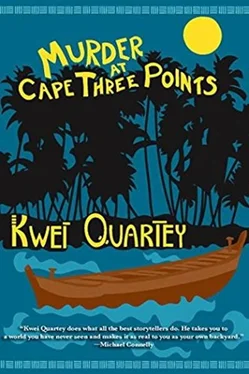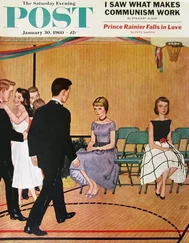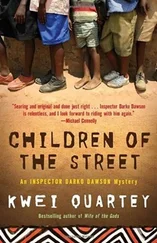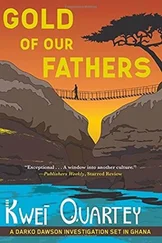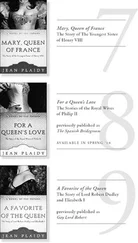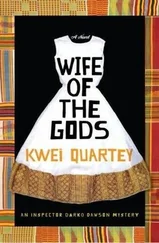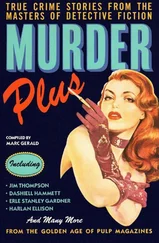She brought out two manila envelopes, took out a picture from one of them, and handed it to him.
“As you can see, she was very beautiful,” she said, dragging her chair closer to his.
He examined the photo. Despite the faded sepia tone of the period, it was clear that the fair-skinned Bessie with her dark swept-up hair and large expressive eyes had been a woman of extraordinary beauty. She was dressed in a white lace blouse and a long, layered, dark skirt with lace trim.
“I see what you mean,” he said, turning the photograph over. “Lovely. What about pictures of Tiberius, her husband?”
Eileen shook her head. “I have never located any. It could be Bessie destroyed them or didn’t keep them or pass them along, because in 1940 she and Tiberius were divorced.”
“Ah, I see,” Dawson said. It stood to reason that Bessie would then abandon mementos of her marriage to Tiberius. “Why the divorce?”
Eileen looked regretful. “Again, I don’t know.”
“Did Bessie remarry?”
“Yes-to Robert E. Aidoo, or ‘R.E.,’ as people called him. Not long after that, she and R.E. left England to settle in Ghana-the then Gold Coast. So, Bessie came full circle back home. I have several pictures of R.E.”
From the second envelope, Eileen pulled out about a dozen photos that she handed to Dawson. She stood over his shoulder as he sifted through the pictures of Bessie and R.E. singly and together, and two children close in age.
“These are their kids?” Dawson asked.
“Yes. This is Simon, my father, and his younger brother, Uncle Cecil.”
Dawson admired their style. The children were solemn and smartly dressed. R.E. was unsmiling but dashing in a dark suit, white shirt with a wing collar, and tie in every picture. He appeared inscrutable and proper.
“I understand your father, Simon, has dementia.”
Eileen sighed. “Yes. He stays here with me, and I take care of him with the help of a house girl.”
“Does he speak?
“Some days more than others. He mostly asks who I am-over and over again.”
“Sorry. That must be difficult for you.”
“At times, but he doesn’t become agitated, and I’m grateful for that.”
“Is Uncle Cecil alive?”
She made an offhand gesture. “He lives in the UK somewhere. He’s isolated, and we don’t communicate.”
The fractured nature of the Smith-Aidoo family struck Dawson. On the other hand, Eileen appeared devoted to Simon. He felt a twinge of guilt as he thought of his relationship with his father once again.
“Do you know the span of these photos of Bessie and R.E. and the children?” Dawson asked.
“About ten years.”
“Bessie looks happy.”
“Yes, I believe she was very much in love with R.E. I have a love letter she wrote to him while she was still with Tiberius. “Would you like to see it?”
“I would be honored.”
She extracted it from the folder with even more care than she had shown with the photos. The letter was a single sheet of paper that had darkened and become brittle with age. The writing was cursive and careful, as though Bessie had gone through several drafts before the final product.
21st July, 1939
My dearest Bobby ,
Ah! You left me alone yesterday, darling, with the lovely ring to comfort me. I kiss it every passing minute, and now my lips are golden. Thank you for your kindness. I will not let HIM find it. It will stay in a secret place until I am rid of HIM and we are together.
All my night was sleepless, dreaming of playing with my beloved. Are you feeling as if I am by your side, darling? God bless your thoughts for me. I do not know what more to say but hope to write a long one next time.
Good-bye darling
A big kiss to you ,
Bessie
“I like the old-fashioned language,” Dawson said with a smile. “By ‘HIM,’ I assume she was referring to Tiberius?”
“Yes, evidently.”
So, by at least 1939, and maybe even earlier, Dawson reasoned, Bessie had been having an affair with R.E. Obviously he had been a dashing, attractive man, but surely it would have taken more than that to drive Bessie into his arms? What had been going on in her marriage that had encouraged her to stray? Another thought struck Dawson. “What about children?” he asked Eileen. “Did Bessie have any with Tiberius?”
She looked up at him from the letter, which she had been studying. “Only one that I know of-Richard Sarbah. I was told he had at least one sister, but I haven’t confirmed that. Have you met Jason Sarbah?”
“Yes, I have.”
“That’s Richard’s son-Charles’s cousin. Richard lives not far away in New Amanful, a suburb of Takoradi. On one occasion several years ago, I tried to approach him for more information about Bessie, but he said he couldn’t help me. He seemed bitter and resentful-angry, even-and I know the probable reason.”
She went to the window and looked out at the street through the dusty patina and then turned to face Dawson with a look of distress. “R.E. and Grandma Bessie were killed in 1952, more than ten years before I was born. They were murdered-hacked to death late one night as they slept.”
Dawson was shocked. “Oh!”
“A brutal, bloody killing, Inspector,” she said quietly, with so much emotion that the murder scene could have been right before them. “I can show you some newspaper articles I got from the archives at the university library.”
She picked through some boxes until she found three clippings from a daily paper called Gold Coast Times. In the first, the murder of Bessie and R.E. Aidoo, “who met their ruthless and tragic death while in slumber,” was a front-page news item.
The second clipping detailed how Bessie’s ex-husband, Tiberius Sarbah, had been arrested for the crime. The third announced that he had been released and charges dropped, due to insufficient evidence. A witness had retracted his original story that he had seen Tiberius commit the crime. The newspaper speculated that the witness, who was reportedly a minor, might have been one of the two now-orphaned children, Simon or Cecil, who were eleven and nine respectively.
All that was fascinating, but something else excited Dawson. “Do you see it, Eileen?” he said, turning to her in earnest. “Do you know what I’m thinking?”
“I believe I do, Inspector,” she replied, her eyes widening as she caught his fever. “You’re wondering if the butchery of Bessie and R.E. in 1952, and the massacre of Charles and Fiona in July of this year could be connected.”
“They’re too alike not to be,” Dawson said. “A husband and wife brutally murdered in both cases. It doesn’t matter that they are far apart in time.”
She smiled widely for the first time, showing several missing teeth. “You must be a divine gift, Inspector. I tried to make that case to Superintendent Hammond. He was not impressed-dismissed it at once.”
That’s the way it often was in Dawson’s line of business. What struck one detective as important could appear trivial, or at least coincidental, to another.
“The question is,” Dawson continued, “how could those two cases, so separate in time from one another, be related? Have you ever asked your father what he remembers about the events surrounding the murder?”
“Yes. Even before he became demented, he refused to talk about it and told me to put it out of my mind forever.”
“I see,” Dawson said, watching Eileen. He hadn’t quite known what to make of her in the first minutes of their meeting each other, but now he liked her. “What about Richard Sarbah?” he asked her. “You think he’ll talk to me?”
She seemed optimistic. “Between your charm and your authority, he might.”
Читать дальше
